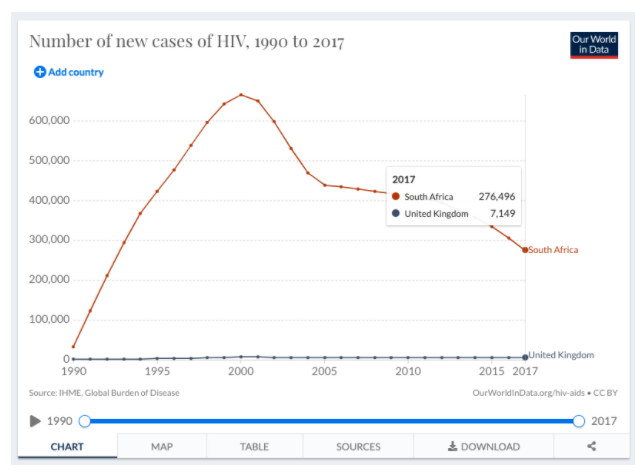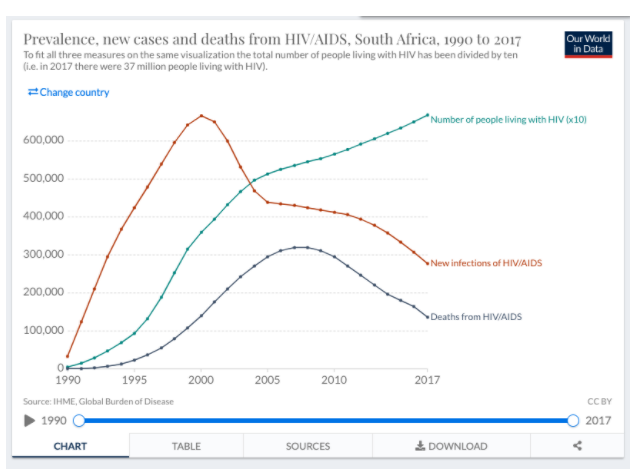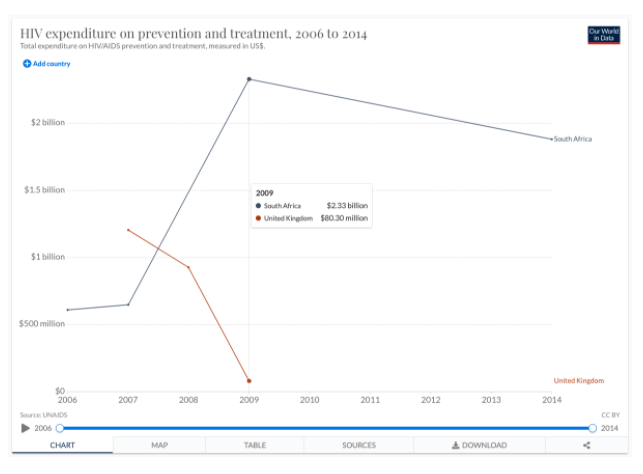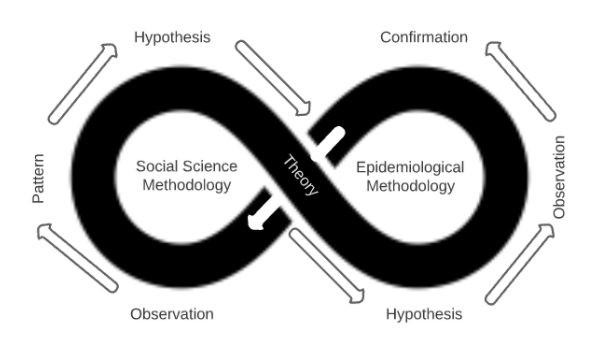This article addresses the challenges that the health system in Kathmandu faces as a result of rapid urbanisation, and follows with some recommendations for improving the resilience of the Kathmandu health system. Throughout this essay, “Kathmandu” refers to the Kathmandu Valley, including the municipalities of Kathmandu, Lalitpur, Bhaktapur, Kirtipur and Madhyapur Thimi.
Urbanisation
There are good reasons why people move from rural areas to the city. In Nepal, rural-born individuals moving to urban areas have a 28% higher chance (increasing from 38% to 66%) of obtaining better occupations than their fathers. (World Bank, 2016). Between 2011 and 2021, Nepal’s urban population increased by over 300% (National Statistics Office, 2022), reflecting a global urbanisation trend of people moving from rural to urban areas. Indeed, Nepal’s urbanisation is the fastest in South Asia (World Bank, 2016). The population density of Kathmandu is 5,169 people per km2, in stark contrast to rural districts such as Manang that have a population density of just 3 people per km2 (National Statistics Office, 2022). These disparities alone lead to numerous resourcing and infrastructure challenges, whilst the pace of urbanisation in Kathmandu is straining the city’s infrastructure, which isn’t able to adapt in such a short period of time. Additionally, those who move from rural to urban areas are rarely, if ever, seen as a distinct population group in their own right, with their own needs and challenges (Khadka et al, 2023). Urbanisation itself has been recognised as a determinant of health (Vlahov, 2007), and the rapid pace urbanisation results in a widening in health and wellbeing inequities (Wamukoya, 2020).
Hospitals and health services
This rapid urbanisation, the impact of Covid, and a recent deal with the UK government (Aryal and Pollitt, 2022) that allows healthcare professionals from Nepal to be recruited to work in the NHS contribute to a system that struggles to cope with demand. In 2016, Nepal had a density of seven health service providers per 10,000 people; the WHO-defined critical threshold is 23 per 10,000 (Pandey, 2016). During the Covid-19 crisis, hospitals in Kathmandu were overwhelmed, and despite having adequate supplies of vaccine, were not able to get vaccines to the people that needed them. Reports were of mismanagement, overcrowding, and long queues whilst the hospital ran out of vaccination cards (Ojha, 2021). Medical supplies are not necessarily the issue in Kathmandu – it is instead the capacity of the system to adequately serve the population. As of 2022, Nepal has on average, 2.8 nurses and midwives for every 10,000 people, compared with 13 in the UK (Haakenstad et al, 2022), and whilst plans exist to build further healthcare facilities with much greater capacity, a shortage of healthcare workers remains a significant challenge (Dhakal, 2023).
Increased pollution and health impacts
An increasingly dense population in a city such as Kathmandu causes increased pollution, and a core challenge is the management of municipal solid waste (MSW). Collection services are rare, and only two municipalities in Kathmandu dispose of waste in sanitary landfills. In most instances, waste is disposed of at riverbanks, dumps, open pits, or simply burned (World Bank, 2016). The release of untreated wastewater into water bodies and the mismanagement of solid waste have polluted Kathmandu river systems, and compounding the problem, Kathmandu faces a scarcity of drinking water: access to piped water over the past decade has actually decreased (Muzzini and Aparicio, 2013).
Nepal has the highest age-adjusted death rate globally for chronic lung disease, 182.5 per 100,000 people (Carson-Chahhoud, 2019). Kathmandu in particular, faces a greater challenge due to its topography – an enclosed valley surrounded by mountains – which traps airborne particulate pollution. Levels of small particulate matter in the Kathmandu Valley can exceed 500 micrograms per cubic metre (Gurung and Bell, 2012), 20 times the World Health Organisation’s safe upper limit. In March 2023, Kathmandu registered the world’s highest Air Quality Index at 181, predominantly due to vehicle emissions and waste burning (Himalayan News Service, 2023). Open burning of MSW is a significant source of air pollution: an estimated 7,400 tons of MSW was burned in just three municipalities near Kathmandu in 2016 (Das et al., 2018).

Figure 1: ‘Rubbish’, Kirtipur. Credit: Ammalal Sejuwal, Khila Karki, and Vishan Thami. (Khadka et al, 2023)
Of 1.2 million vehicles in Nepal, about 34.25% are primarily in the Kathmandu Valley, and are responsible for around 89% of PM10 emissions (Dhital, 2017). While Nepal has vehicle emission standards, the limited number of Vehicular Emission Testing (VET) centres, all situated within Kathmandu Valley, leads to little testing outside this area. There is even a thriving market in fake test stickers to suggest the vehicle is compliant. A lack of an efficient public transport system also means that many Kathmandu residents are forced to use private vehicles to get around (Saud and Paudel, 2018). This increased traffic has also resulted in an increase in road traffic accidents and traumatic injuries or death (Huang et al, 2017).
Rise of NCDs
Urbanisation increases the major behavioural risk factors for NCDs, namely physical inactivity, low fruit and vegetable consumption, and tobacco and alcohol use (Oli et al, 2013). The prevalence of NCDs such as hypertension and diabetes is increasing across Nepal (Mishra, 2015), with a higher prevalence of conditions such as diabetes in Kathmandu compared to rural areas (Rimal and Panza, 2013). In urban areas, NCDs were the leading cause of mortality, exceeding the rates of death from accidents, suicides, and criminal incidents, according to the 2021 census in Nepal (CHORUS, 2023). Across Nepal, NCDs are estimated to account for 66% of all deaths (WHO, 2016) and this rise in NCDs causes a corresponding increase in demand upon an already burdened healthcare system, particularly challenging because Nepal’s healthcare system isn’t accustomed to treating NCDs, having been traditionally focused primarily on infectious diseases (Rai et al, 2001).
Federalisation
In 2015, Nepal adopted a new constitution, transitioning from a unitary form of governance to a secular federal democratic republic: power and resources were devolved from the central government to seven newly created provinces and 753 municipalities, which also resulted in significant reforms of the health system. Federalisation can lead to both challenges and opportunities, as local governments may be better positioned to understand and meet the specific needs of their communities, but they may also face difficulties due to limited resources, lack of experience, or coordination challenges with other levels of government (Belbase, no date). Since the federalisation of Nepal’s health system, its performance has been improving, though significant work remains (Chen et al, 2023). More health workers are available locally than previously, with less absenteeism, however there are challenges around skills and training. Challenges also exist where local policymakers are less experienced in effective budgeting, compared to their central government counterparts (Wasti et al, 2023). One example of federalisation success is Pokhara, where local government enabled urban primary healthcare clinics to identify vulnerable groups and individuals in their catchment areas and identify ways of improving their access to services (Elsey, 2019).
Recommendations
In order for the health system in Kathmandu to adequately address the a challenges of rapid urbanisation, a number of strategies should be considered:
1 – System resourcing:
The establishing of baseline requirements for municipalities, such as specific provider-to-patient ratios and the availability of essential resources would guide local healthcare providers in aligning their healthcare systems with national objectives, while still allowing them the flexibility to prioritise local needs. Improved training, recruitment and retention of healthcare workers at the local level is also necessary to reach and maintain an appropriate level of resilience in the healthcare system.
2 – Prevention and treatment of NCDs.
The prevalence of NCDs in the population of Kathmandu is increasing. Education on the causes, harm and impact of NCDs, steps that people can take to prevent them, alongside greater education on treatment, will ease the pressure on the health system.
3 – Addressing social determinants of health:
Addressing air pollution and MSW management, as well as prioritising the supply of clean drinking water is critical in order to reduce the prevalence of NCDs and reduce the burden on the health system. Effective waste segregation and collection would reduce the amount of MSW that is openly burned; bio-gasification of commercial waste and composting of household waste combined with recycling, falling back on well-managed landfill where necessary, would be cost-effective and reduce air pollution significantly (Singh et al, 2014 and Dangi et al, 2009). Measures to improve traffic management, including a transition to electric vehicles, will improve air quality in the Kathmandu Valley and reduce the harmful effects of air pollution.
Kathmandu’s health system faces many challenges arising from rapid urbanisation, including strained infrastructure, increasing pollution, and increased prevalence of NCDs. Addressing these issues requires an approach that includes improving healthcare resourcing, enhancing education and prevention strategies for NCDs, and tackling social and environmental determinants of health. Building on federalisation, improving local governance and providing tailored local healthcare strategies is crucial in adapting to the demands of an increasingly urbanised population.
References:
Adhikari, B., Pokharel, S. and Mishra, S.R., 2019. Shrinking urban Greenspace and the rise in non-communicable diseases in South Asia: an urgent need for an advocacy. Frontiers in Sustainable Cities, 1, p.5.
Aryal, E and Pollitt, N. 2022. Memorandum of understanding between the Government of Nepal and the Government of the United Kingdom of Great Britain and Northern Ireland on the recruitment of healthcare professionals (text only) (no date) GOV.UK. Available at: https://www.gov.uk/government/publications/memorandum-of-understanding-between-the-uk-and-nepal-on-the-recruitment-of-healthcare-workers/memorandum-of-understanding-between-the-government-of-nepal-and-the-government-of-the-united-kingdom-of-great-britain-and-northern-ireland-on-the-recr (Accessed: 23 November 2023).
Belbase, K., Federalism in Nepal: Issues and Challenges. (No date). Available at: https://classic.iclrs.org/content/blurb/files/krishna%20belbase.pdf (Accessed: 23 November 2023).
Bista, B., Dhimal, M., Bhattarai, S., Neupane, T., Xu, Y.Y., Pandey, A.R., Townsend, N., Gyanwali, P. and Jha, A.K., 2021. Prevalence of non-communicable diseases risk factors and their determinants: Results from STEPS survey 2019, Nepal. PloS one, 16(7), p.e0253605.
Carson-Chahhoud, K., Noori, M., Nejadghaderi, S.A., Sullman, M., Ahmadian Heris, J., Ansarin, K., Mansournia, M., Kolahi, A.A. and Kaufman, J., 2021. The burden of chronic obstructive pulmonary disease and its attributable risk factors in 204 countries and territories, 1990-2019: Results from the Global Burden of Disease Study 2019.
CHORUS. Insights Special Issue 4: Special Edition on Urban October in Association with CHORUS – Research on Urban Health (2023) Herd International. Available at: https://www.herdint.com/resources/insights-special-issue-4-special-edition-on-urban-october-in-association-with-chorus-research-on-urban-health/ (Accessed: 23 November 2023).
Dangi, M.B., Cohen, R.R., Urynowicz, M.A. and Poudyal, K.N., 2009. Report: Searching for a way to sustainability: technical and policy analyses of solid waste issues in Kathmandu. Waste Management & Research, 27(3), pp.295-301.
Das, B., Bhave, P.V., Sapkota, A. and Byanju, R.M., 2018. Estimating emissions from open burning of municipal solid waste in municipalities of Nepal. Waste management, 79, pp.481-490.
Dhakal, S. 2023. Civil Service Hospital crowded like a fair. The Annapurna Express. Available at: https://theannapurnaexpress.com/news/civil-service-hospital-crowded-like-a-fair-39837/ (Accessed: 22 November 2023).
Dhital, D. (2017) Vehicle Emission Testing System in Nepal; Still in the Crawling Phase, Academia.edu. Available at: https://www.academia.edu/31317941/Vehicle_Emission_Testing_System_in_Nepal_Still_in_the_Crawling_Phase (Accessed: 16 October 2023).
Elsey, H., Agyepong, I., Huque, R., Quayyem, Z., Baral, S., Ebenso, B., Kharel, C., Shawon, R.A., Onwujekwe, O., Uzochukwu, B. and Nonvignon, J., 2019. Rethinking health systems in the context of urbanisation: challenges from four rapidly urbanising low-income and middle-income countries. BMJ global health, 4(3), p.e001501.
Green, L. (2013) Chapter 11, QUEUEING ANALYSIS IN HEALTHCARE. Patient flow. Edited by Hall, R. AMC
Gurung, A. and Bell, M.L., 2012. Exposure to airborne particulate matter in Kathmandu Valley, Nepal. Journal of Exposure Science & Environmental Epidemiology, 22(3), pp.235-242.
Haakenstad, Annie, Caleb Mackay Salpeter Irvine, Megan Knight, Corinne Bintz, Aleksandr Y. Aravkin, Peng Zheng, Vin Gupta et al. (2022) “Measuring the availability of human resources for health and its relationship to universal health coverage for 204 countries and territories from 1990 to 2019: a systematic analysis for the Global Burden of Disease Study 2019.” The Lancet 399, no. 10341: 2129-2154.
Himalayan News Service (2023) Kathmandu one of world’s most polluted city, The Himalayan Times. The Himalayan Times. Available at: https://thehimalayantimes.com/environment/kathmandu-one-of-worlds-most-polluted-city (Accessed: 16 October 2023).
Huang, L., Poudyal, A.K., Wang, N., Maharjan, R.K., Adhikary, K.P. and Onta, S.R., 2017. Burden of road traffic accidents in Nepal by calculating disability-adjusted life years. Family medicine and community health, 5(3), pp.179-187.
Khadka, S., Koirala, B., Baidya, M., Ferhani, A., Jiban, K., Lee, A., Panday, S. and Rushton, S., 2023. The health consequences of urbanization in Nepal: perspectives from a participatory photo project with recent rural-urban migrants. The Highlander Journal, 3(1), pp.37-50.
Kim, B.M., Park, J.S., Kim, S.W., Kim, H., Jeon, H., Cho, C., Kim, J.H., Hong, S., Rupakheti, M., Panday, A.K. and Park, R.J., 2015. Source apportionment of PM10 mass and particulate carbon in the Kathmandu Valley, Nepal. Atmospheric Environment, 123, pp.190-199.
Kumar, R. (2022) Cost of living in a big city, Nepali Times. Available at: https://nepalitimes.com/here-now/cost-of-living-in-a-big-city (Accessed: 20 November 2023).
Lodge, A. 2014. Has air pollution made Kathmandu unliveable? The Guardian. Guardian News and Media. Available at: https://www.theguardian.com/cities/2014/mar/21/air-pollution-kathmandu-nepal-liveable-smog-paris (Accessed: 23 November 2023).
Mayhew, L. and Smith, D., 2006. Using queuing theory to analyse completion times in accident and emergency departments in the light of the Government 4-hour target.
Mishra, K. 2023. Impediments in the Agriculture Sector of Nepal, Nepal Economic Forum. Available at: https://nepaleconomicforum.org/impediments-in-the-agriculture-sector-of-nepal/ (Accessed: 18 November 2023).
Mishra, S.R., Neupane, D., Bhandari, P.M., Khanal, V. and Kallestrup, P., 2015. Burgeoning burden of non-communicable diseases in Nepal: a scoping review. Globalization and health, 11(1), pp.1-10.
Muzzini, E., & Aparicio, G. (2013). “Urban Growth and Spatial Transition in Nepal: An Initial Assessment. Directions in Development”.World Bank Directions in Development http://doi.org/10.1596/978-0-8213-9659-9
National Statistics Office (2022). National population and Housing Census 2021: National Report. Kathmandu Nepal. Available at: https://censusnepal.cbs.gov.np/results/population?province=3&district=28 (Accessed: 14 November 2023).
Ojha, A. 2021. Government mismanagement leads to crowding at hospitals. The Kathmandu Post. Available at: https://kathmandupost.com/health/2021/04/22/government-mismanagement-leads-to-crowding-at-hospitals (Accessed: 23 November 2023).
Oli, N., Vaidya, A., & Thapa, G. (2013). Behavioural Risk Factors of Noncommunicable Diseases among Nepalese Urban Poor: A Descriptive Study from a Slum Area of Kathmandu. Epidemiology Research International, 2013, 1-13.
Pandey, N.R., 2016. Emergency medicine in Nepal: present practice and direction for future. International journal of emergency medicine, 9(1), pp.1-6.
Rai, S.K., Rai, G., Hirai, K., Abe, A. and Ohno, Y., 2001. The health system in Nepal—an introduction. Environmental health and preventive medicine, 6(1), pp.1-8.
Rimal, A., & Panza, A. (2013). Prevalence Of, And Factors Associated With, Type 2 Diabetes And Its Microvascular Complications Among The Elderly In Kathmandu, Nepal. Journal of Health Research, 27, 45-49.
Singh, R.K., Yabar, H., Mizunoya, T., Higano, Y. and Rakwal, R., 2014. Potential benefits of introducing integrated solid waste management approach in developing countries: A case study in Kathmandu city. Journal of sustainable development, 7(6), p.70.
Vlahov, D., Freudenberg, N., Proietti, F., Ompad, D., Quinn, A., Nandi, V. and Galea, S., 2007. Urban as a determinant of health. Journal of urban health, 84, pp.16-26.
Wamukoya, M., Kadengye, D.T., Iddi, S. and Chikozho, C., 2020. The Nairobi urban health and demographic surveillance of slum dwellers, 2002–2019: value, processes, and challenges. Global Epidemiology, 2, p.100024.
Wasti, S.P., van Teijlingen, E., Rushton, S., Subedi, M., Simkhada, P. and Balen, J., 2023. Overcoming the challenges facing Nepal’s health system during federalisation: an analysis of health system building blocks. Health Research Policy and Systems, 21(1), p.117.
World Bank Group, 2016. Moving up the ladder: Poverty reduction and social mobility in Nepal. World Bank.
World Health Organization. Noncommunicable Diseases (NCD) Country Profiles. World Health Organization; 2018. Available from: https://www.who.int/nmh/countries/npl_en.pdf?ua=1.




